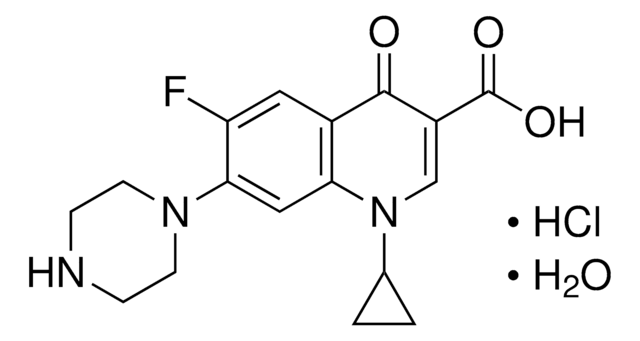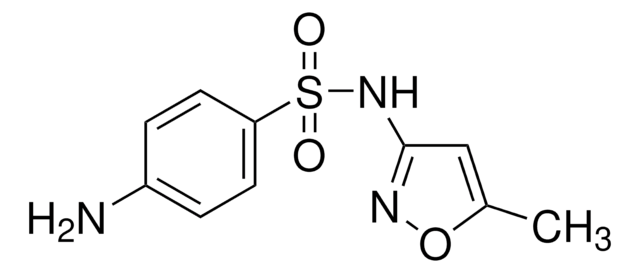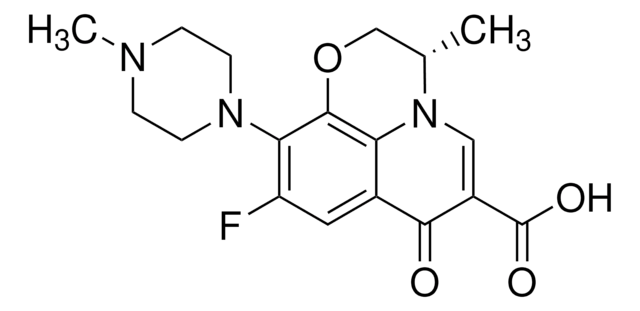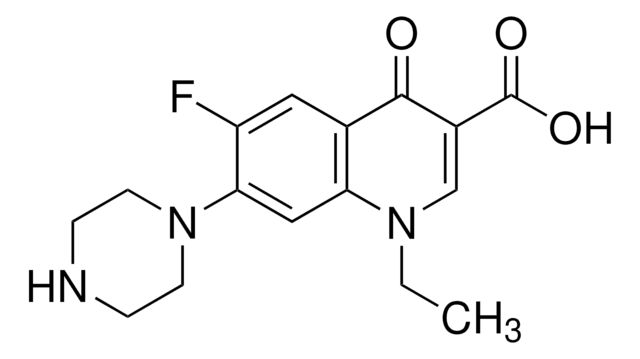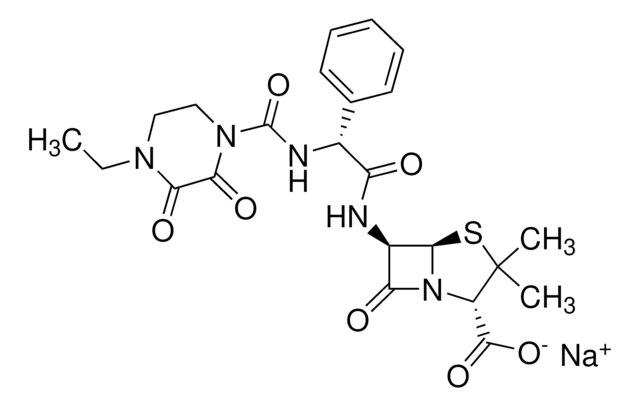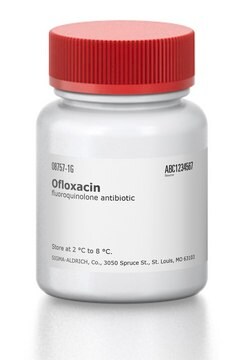17850
Ciprofloxacin
≥98% (HPLC)
Sinónimos:
1-Cyclopropyl-6-fluoro-4-oxo-7-(piperazin-1-yl)-1,4-dihydroquinoline-3-carboxylic acid, Ciprobay
About This Item
Productos recomendados
agency
EPA 1694
Quality Level
assay
≥98% (HPLC)
form
powder or crystals
antibiotic activity spectrum
Gram-negative bacteria
Gram-positive bacteria
application(s)
environmental
mode of action
DNA synthesis | interferes
enzyme | inhibits
SMILES string
OC(=O)C1=CN(C2CC2)c3cc(N4CCNCC4)c(F)cc3C1=O
InChI
1S/C17H18FN3O3/c18-13-7-11-14(8-15(13)20-5-3-19-4-6-20)21(10-1-2-10)9-12(16(11)22)17(23)24/h7-10,19H,1-6H2,(H,23,24)
InChI key
MYSWGUAQZAJSOK-UHFFFAOYSA-N
Gene Information
human ... CYP1A2(1544) , KCNH1(3756)
rat ... Gabra1(29705)
¿Está buscando productos similares? Visita Guía de comparación de productos
General description
Chemical structure: fluoroquinolone
Application
Biochem/physiol Actions
Storage Class
11 - Combustible Solids
wgk_germany
WGK 2
ppe
Eyeshields, Gloves, type N95 (US)
Elija entre una de las versiones más recientes:
¿Ya tiene este producto?
Encuentre la documentación para los productos que ha comprado recientemente en la Biblioteca de documentos.
Los clientes también vieron
Nuestro equipo de científicos tiene experiencia en todas las áreas de investigación: Ciencias de la vida, Ciencia de los materiales, Síntesis química, Cromatografía, Analítica y muchas otras.
Póngase en contacto con el Servicio técnico
